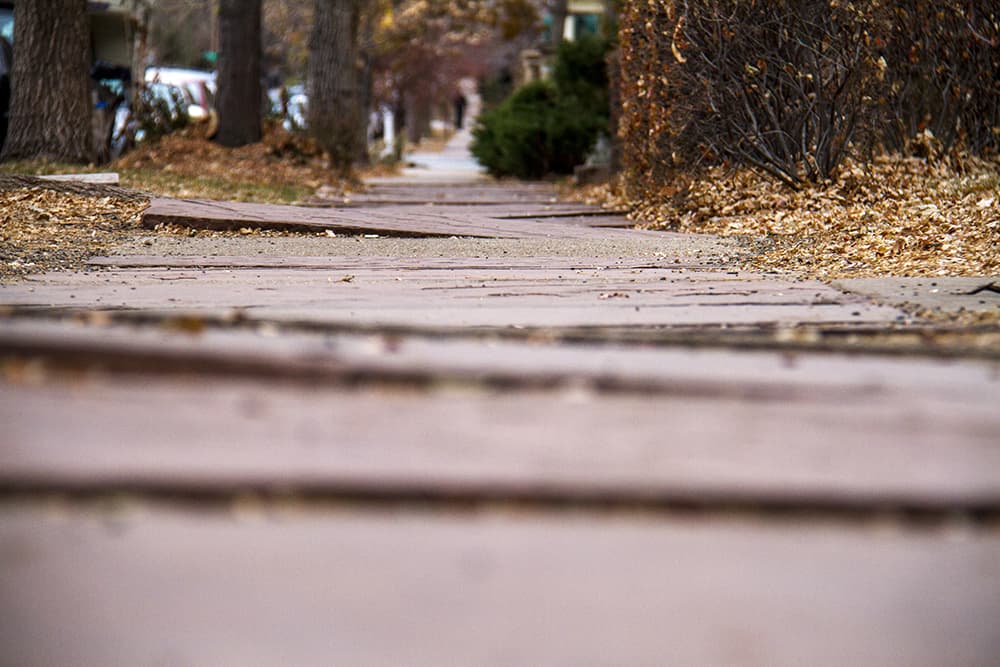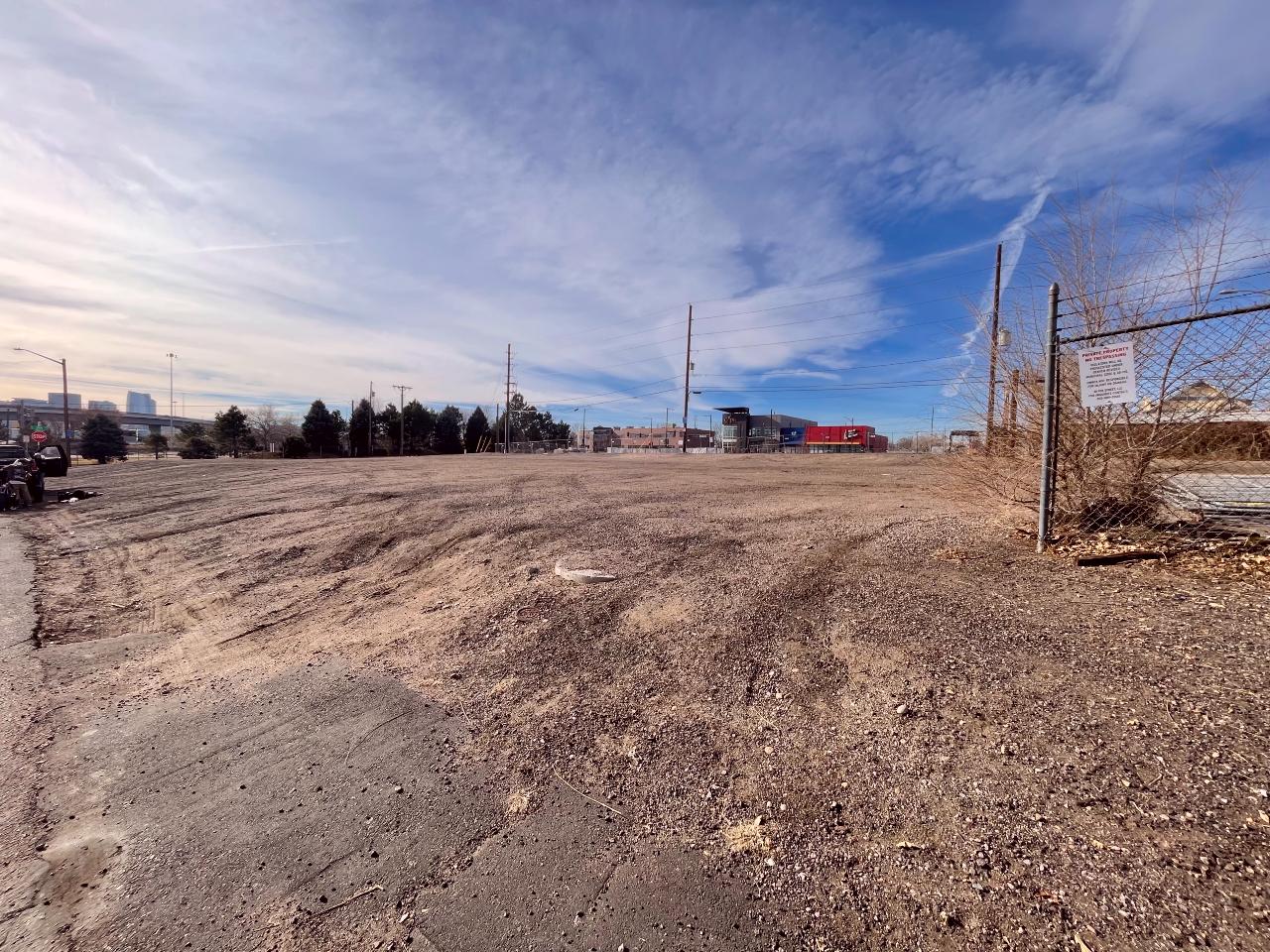As the city begins rolling out its grand, decade-long plan of getting residents to actually fix sidewalks, cracks are forming with concerns from residents in the first region slated for refurbishing.
Residents got their first chance to publicly discuss the project with city officials on Saturday when nearly 100 people attended a meeting at Denver Botanic Gardens. It was the first of many public meetings the city will be holding to introduce their plans and give folks a chance to ask questions or provide input.
For residents in North Capitol Hill, Capitol Hill and Speer, which are the first neighborhoods scheduled for repairs, a consensus over the biggest concerns seemed to slowly build as the meeting progress.
Like so many other Denver residential anxieties, this one is rooted in the potential for change.
“We just want the neighborhood to kind of stay the same,” said Gretchen Kork after the meeting. “We don’t want to pave over history in a historic neighborhood. That just ruins the whole thing.”
The meeting this weekend focused on the first of 11 regions in Denver the city hopes to repair over the next decade. Their plan is to fix about one region a year, in descending order from those needing the repairs most. (And, since this often comes up, this is a separate process from building new sidewalks where there currently aren't any.)
“This is intended to be an 11-year program,” Matt Bryner, acting director of right-of-way engineering service, said this weekend. “We’ll go at the pace we can. We’ll go slow, methodically, we’re going to start at this section and move through region 1.”
Region 1 encompasses the center-most neighborhoods in Denver. The regions are broken up even further; once the city finishes work in the first three areas, they’ll move to other neighborhoods in the region, which includes Cheesman Park, Country Club, Cherry Creek, Congress Park and City Park neighborhoods.

City Councilmen Paul Kashmann and Wayne New both spoke during the meeting, fielding questions and comments and enduring at least one why-are-there-bikes-on-the-sidewalk rant from an attendee.
Kashmann told audience members worrying about responsibilities and cost that turning over full responsibility to the city would likely prompt a tax increase for residents.
"This is the first time in the history of our city that the city has done anything to help homeowners with sidewalk repair," Kashmann said.
Some attendees said they wanted more of a heads up over the city’s plan.
Aimee Zick was among the residents who spoke up during the meeting. Afterward, she chatted with Kork, her neighbor. Both agreed the city should have given them more time to start considering their options.
“The biggest concerns that we have are we just received documentation within the last month, and this is a program that we should have heard about possibly up to a year go,” Zick said.
Paying for the repairs will put another financial burden on residents, which Zick said the city didn’t consider enough. She said there’s a variety of home and property owners from different incomes who now have to figure out a way to pay for this.
Residents have 45 days after notices are delivered to make repairs. If they don't, the city could use its contractor to repair it themselves and bill residents later.
The city is offering affordability programs residents can apply for, which could include discounts for repairs and extended repayment plans.
“There’s a lot of different concerns that are there, but the biggest ones are this is costly to us, no options were made, this was never put on a ballot for us to be able to even vote on,” Zick said.
Residents also raised concerns over the aesthetic impact of what would happen if many of the region's flagstone walkways were suddenly replaced with concrete.
“We want to keep our neighborhood standing as a historical neighborhood. We don’t want to look like the 16th street mall," Zick said.
Another big nuisance folks brought up: The city isn’t giving them a notice of when the inspectors will be visiting their homes. Nancy Kuhn, a spokesperson for Denver Public Works, said in an email they're anticipating inspections will start this week.
“So if we’re going to incur out of pocket expenses, we want to make sure that we’re doing right the first time and not paying substantial fees later on, in addition to the permit costs if we don’t go with the city contractor,” Zick said.
Replacing flagstone sidewalks is going to be a major concern.
"Really, what we're trying to do, is to improve mobility for everybody in the City and County of Denver, whether it's citizens or visitors to the city," Bryner said during his presentation.
Afterward, Bryner said the questions about trees, flagstone and maybe the biggest one — why is this our responsibility? — were expected. They are concerns the city shares, he said. He was happy with Saturday's turnout.
“Especially in this region,” Bryner said. “There’s a lot of flagstone.”
The city is giving people the option to re-level their flagstone or replace it with concrete (the city says red-tinted or white concrete can be used to blend in with existing stone).
Unlike concrete, which is made of cement and is fairly easy to work with, flagstone can be challenging to install. To start, it tends to be more expensive product and harder to get (Bryner said locally, the only source will probably be up in Lyons).
“Whereas with concrete, you've got a truck that pours this liquid and then you’re kind of smoothing it out and putting it in place, with flagstone, you gotta go and dig it out and cut it to the right size and these stones, that are five-feet-by-five-feet ... are like a thousand pounds,” Bryner said.

During the 1880s, Bryner said the material was widely used in Denver. And for the historic downtown neighborhoods, it’s become one of its most well known characteristics (and even immortalized in poems).
Resident Lynne Madsen said this will end up being an extremely expensive repair for most folks. Residents who want to replace their damaged flagstone will have to do so out-of-pocket and must contact a supplier themselves
“We’re going to lose some of that character in these neighborhood because they haven’t helped to put together an option,” Madsen said.
She worries about people who won’t qualify to the city’s affordability program.
“I feel like I’m looking into a black hole and I have no idea if this is a $500 repair or a $5,000 repair. That’s the tough thing,” Madsen said.
For more information:
You can also call 3-1-1 for information, or visit the city's website, which has a page dedicated for information You can also find maps of the other regions to see where your neighborhood is on the city's tentative repair list and apply for the affordabilty program.












